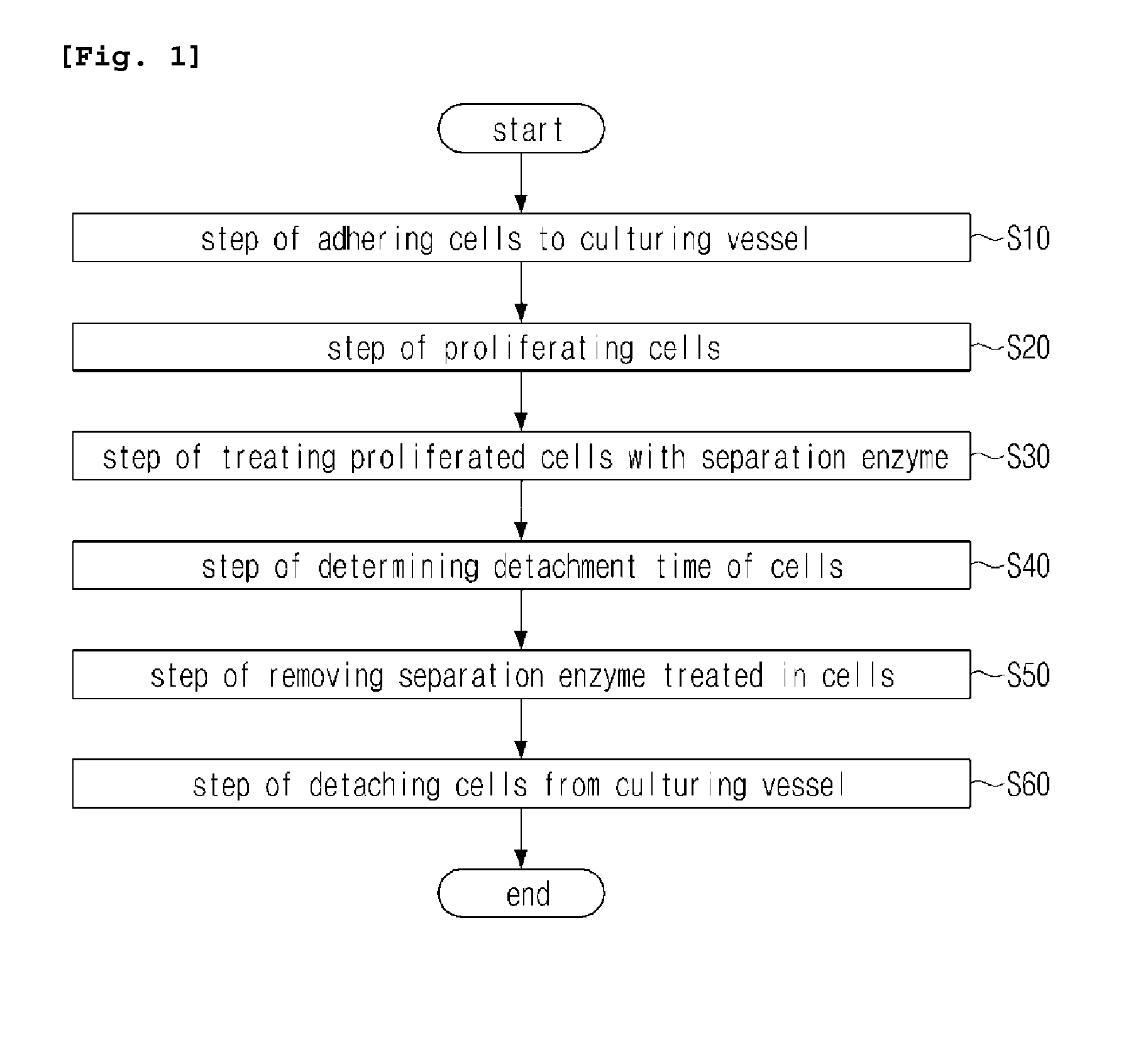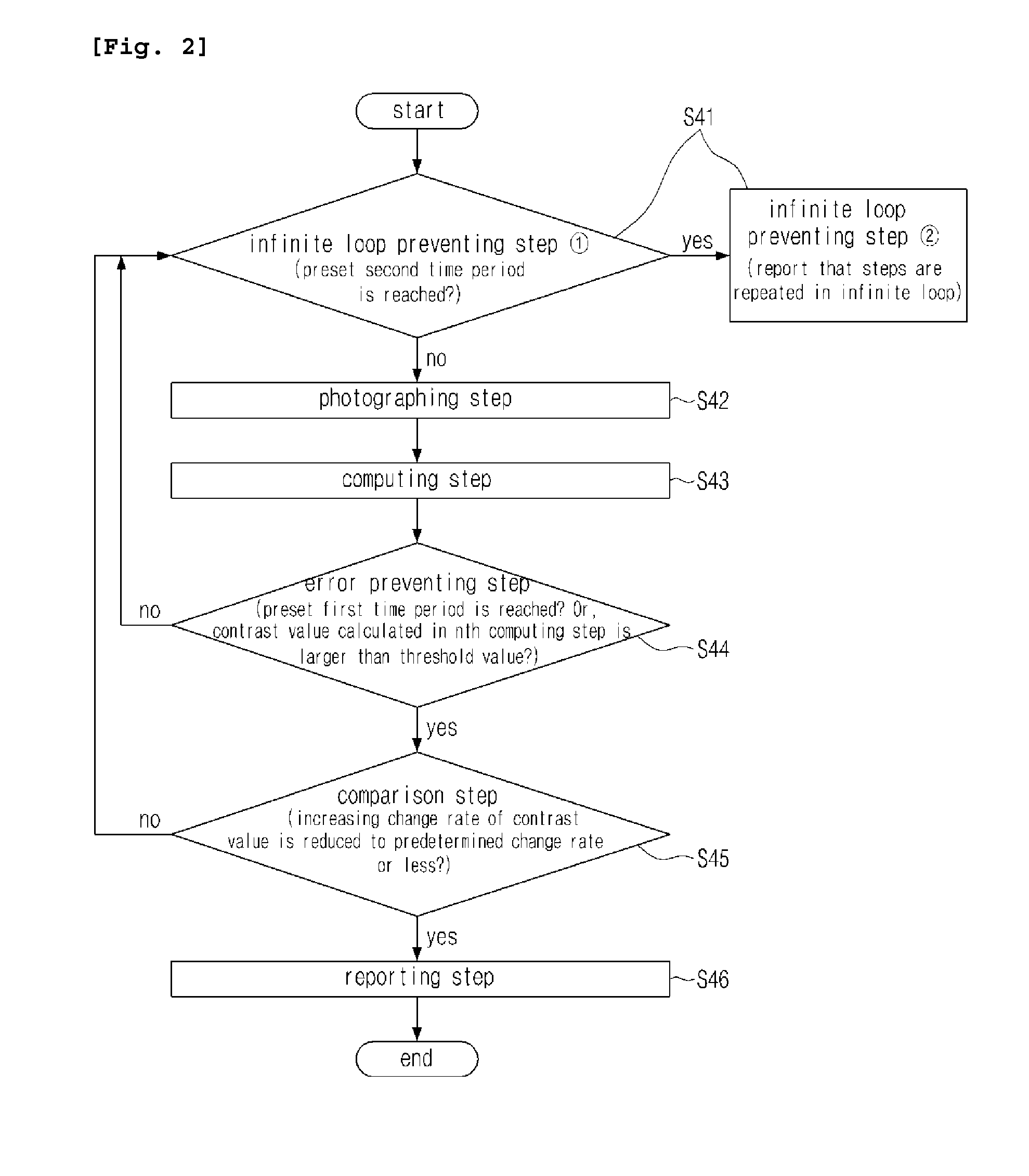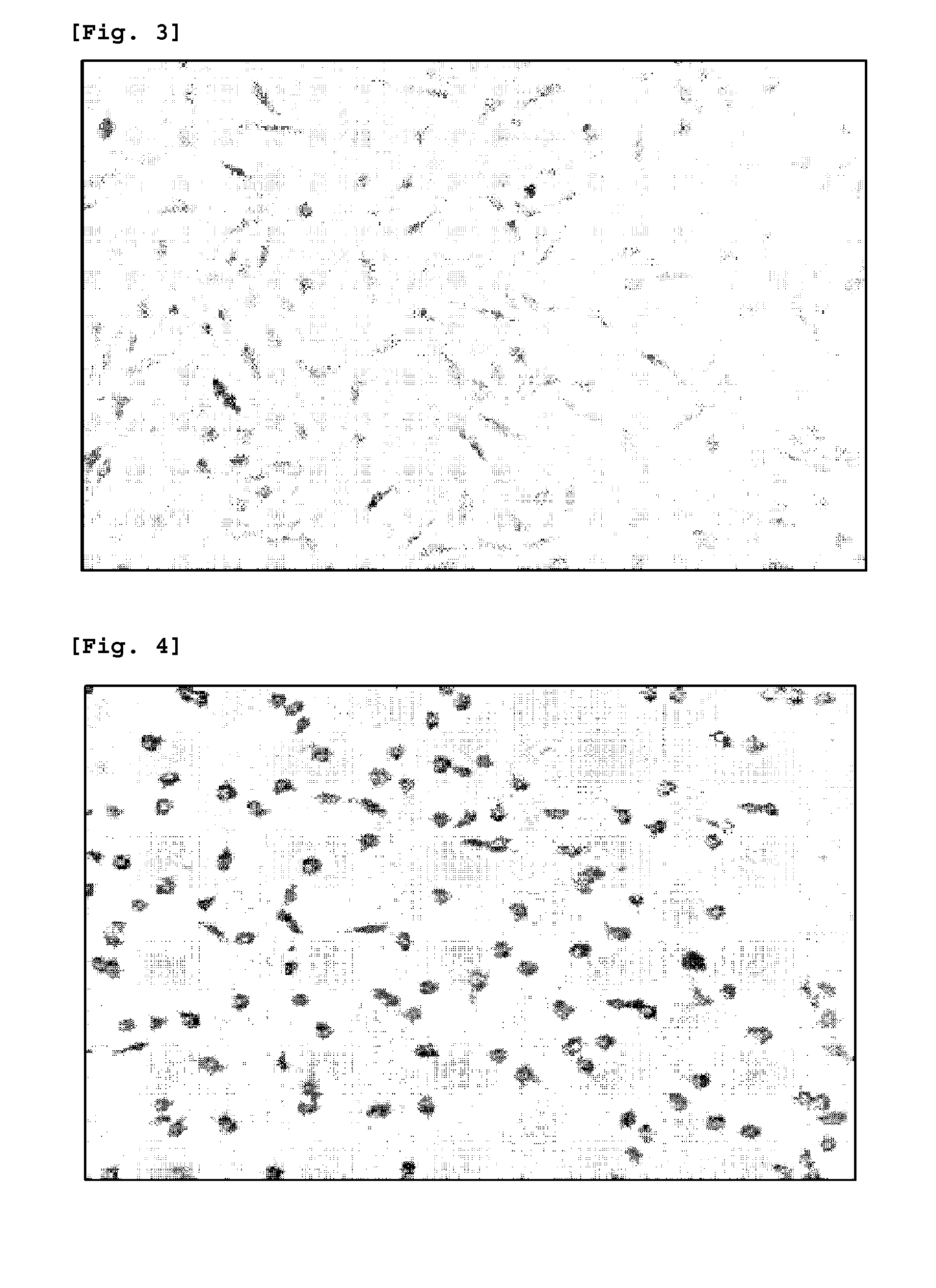Method of deciding detachment time for cell, method of subculturing cell and apparatus for subculturing cell using the same
- Summary
- Abstract
- Description
- Claims
- Application Information
AI Technical Summary
Benefits of technology
Problems solved by technology
Method used
Image
Examples
Embodiment Construction
[0041]Hereinafter, exemplary embodiments of the present invention will be described with reference to the accompanying drawings. However, well-known functions and constructions are omitted to provide a clear and concise description of the present invention.
[0042]First, referring to FIGS. 1 to 5, a method of subculturing cells, according to an embodiment of the present invention, and a method of deciding a detachment time of the cell, according to an embodiment of the present invention, which is used in the subculturing method will be described.
[0043]Herein, FIG. 1 is a flow chart showing a method of subculturing cells, according to an embodiment of the present invention; FIG. 2 is a flow chart showing a method of deciding a detachment time of cells, according to an embodiment of the present invention; FIG. 3 is an image of cells, photographed right after treatment of the cells with a separation enzyme; FIG. 4 is an image of cells, photographed at a detachment time of the cells from ...
PUM
 Login to view more
Login to view more Abstract
Description
Claims
Application Information
 Login to view more
Login to view more - R&D Engineer
- R&D Manager
- IP Professional
- Industry Leading Data Capabilities
- Powerful AI technology
- Patent DNA Extraction
Browse by: Latest US Patents, China's latest patents, Technical Efficacy Thesaurus, Application Domain, Technology Topic.
© 2024 PatSnap. All rights reserved.Legal|Privacy policy|Modern Slavery Act Transparency Statement|Sitemap



